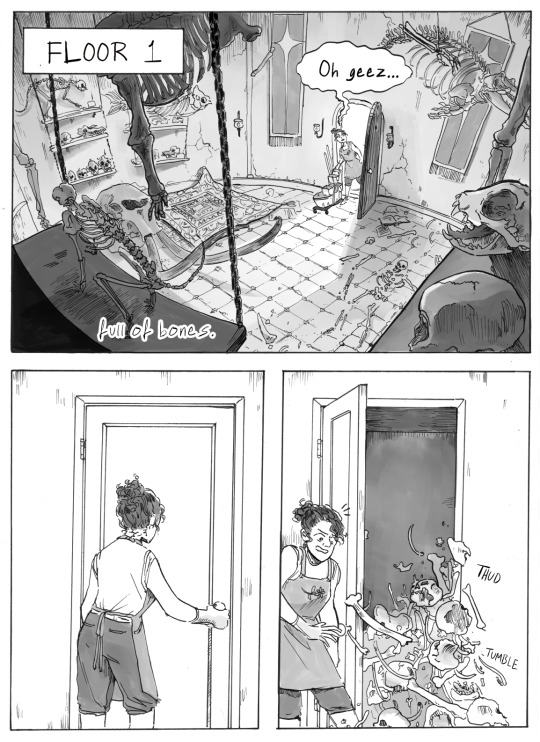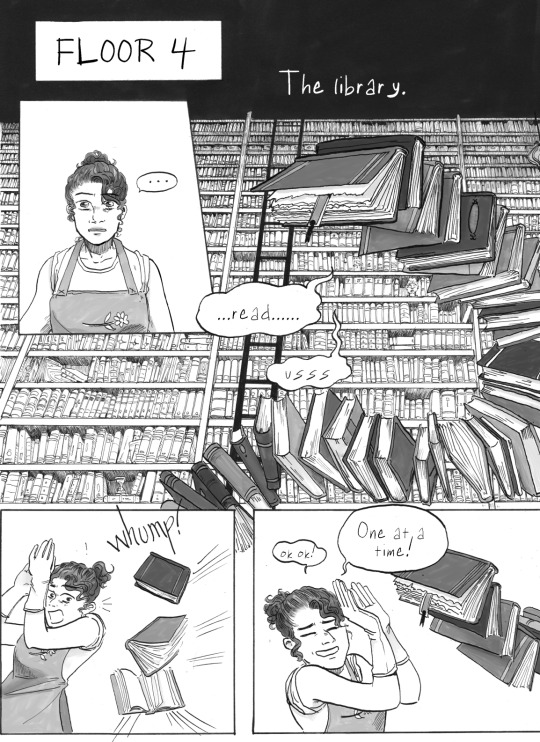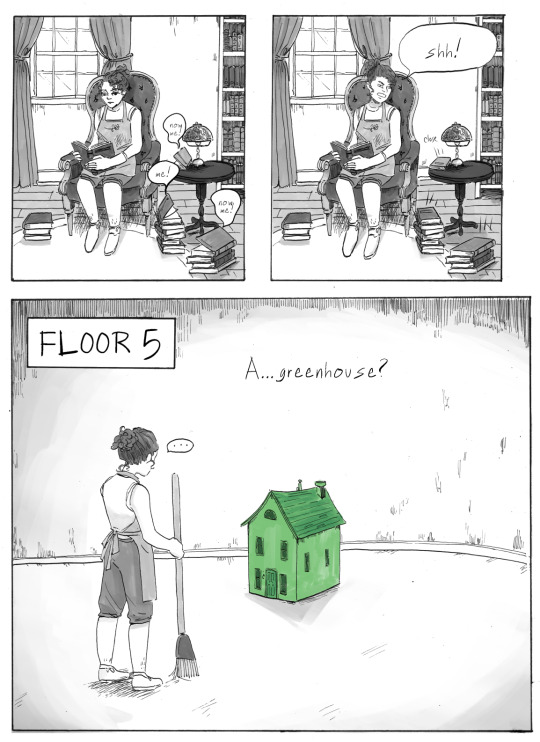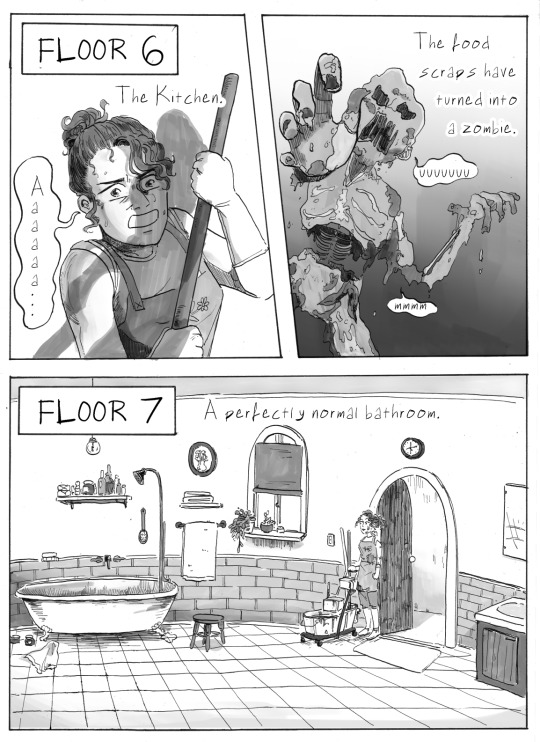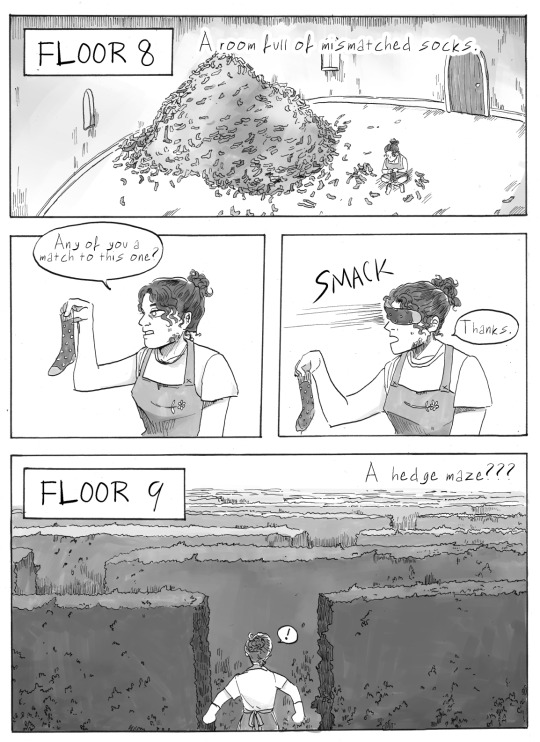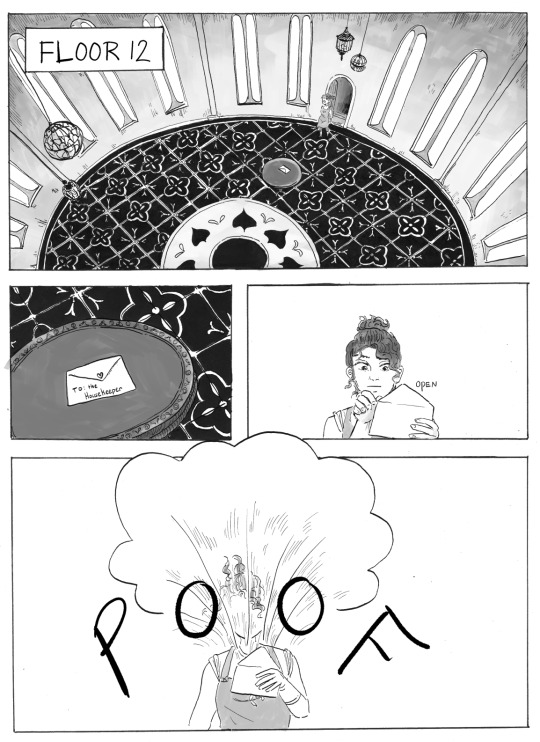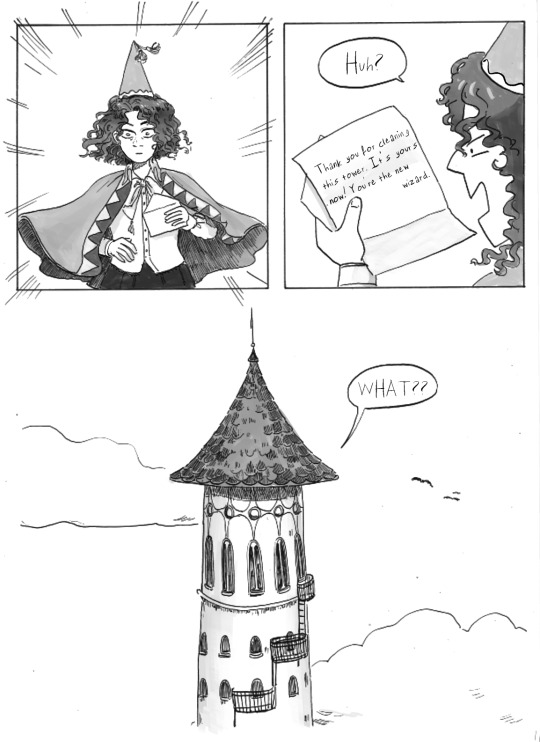Note
Lmao you’re an adult, you shouldn’t be using the word squick. Use trigger. Use your grown up adult words to explain how you feel instead of leaning on a cutesy uwu term that no one outside of tumblr uses. It’s embarrassing.
Idek if this is serious or ironic honestly
90K notes
·
View notes
Note
I would be very interested in hearing the museum design rant

by popular demand: Guy That Took One (1) Museum Studies Class Focused On Science Museums Rants About Art Museums. thank u for coming please have a seat
so. background. the concept of the "science museum" grew out of 1) the wunderkammer (cabinet of curiosities), also known as "hey check out all this weird cool shit i have", and 2) academic collections of natural history specimens (usually taxidermied) -- pre-photography these were super important for biological research (see also). early science museums usually grew out of university collections or bequests of some guy's Weird Shit Collection or both, and were focused on utility to researchers rather than educational value to the layperson (picture a room just, full of taxidermy birds with little labels on them and not a lot of curation outside that). eventually i guess they figured they could make more on admission by aiming for a mass audience? or maybe it was the cultural influence of all the world's fairs and shit (many of which also caused science museums to exist), which were aimed at a mass audience. or maybe it was because the research function became much more divorced from the museum function over time. i dunno. ANYWAY, science and technology museums nowadays have basically zero research function; the exhibits are designed more or less solely for educating the layperson (and very frequently the layperson is assumed to be a child, which does honestly irritate me, as an adult who likes to go to science museums). the collections are still there in case someone does need some DNA from one of the preserved bird skins, but items from the collections that are exhibited typically exist in service of the exhibit's conceptual message, rather than the other way around.
meanwhile at art museums they kind of haven't moved on from the "here is my pile of weird shit" paradigm, except it's "here is my pile of Fine Art". as far as i can tell, the thing that curators (and donors!) care about above all is The Collection. what artists are represented in The Collection? rich fucks derive personal prestige from donating their shit to The Collection. in big art museums usually something like 3-5% of the collection is ever on exhibit -- and sometimes they rotate stuff from the vault in and out, but let's be real, only a fraction of an art museum's square footage is temporary exhibits. they're not going to take the scream off display when it's like the only reason anyone who's not a giant nerd ever visits the norwegian national museum of art. most of the stuff in the vault just sits in the vault forever. like -- art museum curators, my dudes, do you think the general public gives a SINGLE FUCK what's in The Collection that isn't on display? no!! but i guarantee you it will never occur, ever, to an art museum curator that they could print-to-scale high-res images of artworks that are NOT in The Collection in order to contextualize the art in an exhibit, because items that are not in The Collection functionally do not exist to them. (and of course there's the deaccessioning discourse -- tumblr collectively has some level of awareness that repatriation is A Whole Kettle of Worms but even just garden-variety selling off parts of The Collection is a huge hairy fucking deal. check out deaccessioning and its discontents; it's a banger read if you're into This Kind Of Thing.)
with the contents of The Collection foregrounded like this, what you wind up with is art museum exhibits where the exhibit's message is kind of downstream of what shit you've got in the collection. often the message is just "here is some art from [century] [location]", or, if someone felt like doing a little exhibit design one fine morning, "here is some art from [century] [location] which is interesting for [reason]". the displays are SOOOOO bad by science museum standards -- if you're lucky you get a little explanatory placard in tiny font relating the art to an art movement or to its historical context or to the artist's career. if you're unlucky you get artist name, date, and medium. fucker most of the people who visit your museum know Jack Shit about art history why are you doing them dirty like this
(if you don't get it you're just not Cultured enough. fuck you, we're the art museum!)
i think i've talked about this before on this blog but the best-exhibited art exhibit i've ever been to was actually at the boston museum of science, in this traveling leonardo da vinci exhibit where they'd done a bunch of historical reconstructions of inventions out of his notebooks, and that was the main Thing, but also they had a whole little exhibit devoted to the mona lisa. obviously they didn't even have the real fucking mona lisa, but they went into a lot of detail on like -- here's some X-ray and UV photos of it, and here's how art experts interpret them. here's a (photo of a) contemporary study of the finished painting, which we've cleaned the yellowed varnish off of, so you can see what the colors looked like before the varnish yellowed. here's why we can't clean the varnish off the actual painting (da vinci used multiple varnish layers and thinned paints to translucency with varnish to create the illusion of depth, which means we now can't remove the yellowed varnish without stripping paint).
even if you don't go into that level of depth about every painting (and how could you? there absolutely wouldn't be space), you could at least talk a little about, like, pigment availability -- pigment availability is an INCREDIBLY useful lens for looking at historical paintings and, unbelievably, never once have i seen an art museum exhibit discuss it (and i've been to a lot of art museums). you know how medieval european religious paintings often have funky skin tones? THEY HADN'T INVENTED CADMIUM PIGMENTS YET. for red pigments you had like... red ochre (a muted earth-based pigment, like all ochres and umbers), vermilion (ESPENSIVE), alizarin crimson (aka madder -- this is one of my favorite reds, but it's cool-toned and NOT good for mixing most skintones), carmine/cochineal (ALSO ESPENSIVE, and purple-ish so you wouldn't want to use it for skintones anyway), red lead/minium (cheaper than vermilion), indian red/various other iron oxide reds, and apparently fucking realgar? sure. whatever. what the hell was i talking about.
oh yeah -- anyway, i'd kill for an art exhibit that's just, like, one or two oil paintings from each century for six centuries, with sample palettes of the pigments they used. but no! if an art museum curator has to put in any level of effort beyond writing up a little placard and maybe a room-level text block, they'll literally keel over and die. dude, every piece of art was made in a material context for a social purpose! it's completely deranged to divorce it from its material context and only mention the social purpose insofar as it matters to art history the field. for god's sake half the time the placard doesn't even tell you if the thing was a commission or not. there's a lot to be said about edo period woodblock prints and mass culture driven by the growing merchant class! the met has a fuckton of edo period prints; they could get a hell of an exhibit out of that!
or, tying back to an earlier thread -- the detroit institute of arts has got a solid like eight picasso paintings. when i went, they were kind of just... hanging out in a room. fuck it, let's make this an exhibit! picasso's an artist who pretty famously had Periods, right? why don't you group the paintings by period, and if you've only got one or two (or even zero!) from a particular period, pad it out with some decent life-size prints so i can compare them and get a better sense for the overarching similarities? and then arrange them all in a timeline, with little summaries of what each Period was ~about~? that'd teach me a hell of a lot more about picasso -- but you'd have to admit you don't have Every Cool Painting Ever in The Collection, which is illegalé.
also thinking about the mit museum temporary exhibit i saw briefly (sorry, i was only there for like 10 minutes because i arrived early for a meeting and didn't get a chance to go through it super thoroughly) of a bunch of ship technical drawings from the Hart nautical collection. if you handed this shit to an art museum curator they'd just stick it on the wall and tell you to stand around and look at it until you Understood. so anyway the mit museum had this enormous room-sized diorama of various hull shapes and how they sat in the water and their benefits and drawbacks, placed below the relevant technical drawings.
tbh i think the main problem is that art museum people and science museum people are completely different sets of people, trained in completely different curatorial traditions. it would not occur to an art museum curator to do anything like this because they're probably from the ~art world~ -- maybe they have experience working at an art gallery, or working as an art buyer for a rich collector, neither of which is in any way pedagogical. nobody thinks an exhibit of historical clothing should work like a clothing store but it's fine when it's art, i guess?
also the experience of going to an art museum is pretty user-hostile, i have to say. there's never enough benches, and if you want a backrest, fuck you. fuck you if going up stairs is painful; use our shitty elevator in the corner that we begrudgingly have for wheelchair accessibility, if you can find it. fuck you if you can't see very well, and need to be closer to the art. fuck you if you need to hydrate or eat food regularly; go to our stupid little overpriced cafeteria, and fuck you if we don't actually sell any food you can eat. (obviously you don't want someone accidentally spilling a smoothie on the art, but there's no reason you couldn't provide little Safe For Eating Rooms where people could just duck in and monch a protein bar, except that then you couldn't sell them a $30 salad at the cafe.) fuck you if you're overwhelmed by noise in echoing rooms with hard surfaces and a lot of people in them. fuck you if you are TOO SHORT and so our overhead illumination generates BRIGHT REFLECTIONS ON THE SHINY VARNISH. we're the art museum! we don't give a shit!!!
8K notes
·
View notes
Text
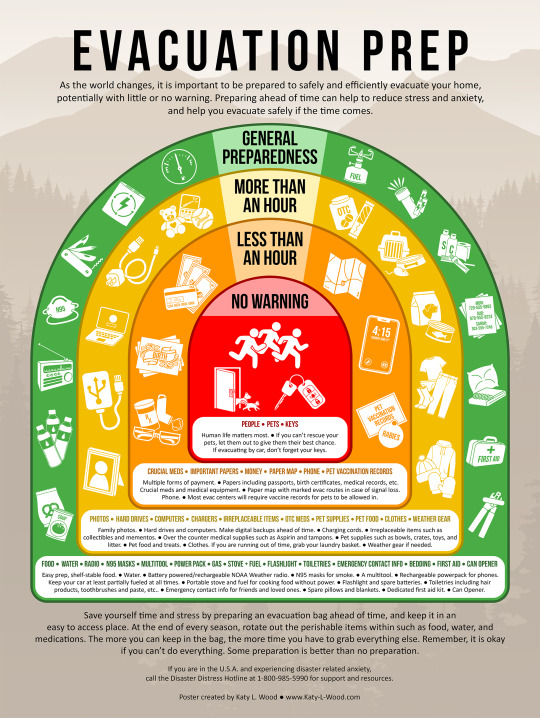
The evacuation prep poster is done! This poster is designed primarily with wildfires in mind, but the tips can apply to preparing for any much any disaster.
If you share this image outside of tumblr, please link back to my website: www.Katy-L-Wood.com
[[Image ID: A poster including a layered graphic showing what items to have ready to prepare for evacuating your home based on how much warning you have that you need to evacuate. The inner, red, level is labeled “No Warning.” The next, orange, level is labeled “Less Than an Hour.” The next, yellow, level is labeled “More Than an Hour.” The final, green, level is labeled “General Preparedness.” The items associated with each level and the text are included below. /end ID.]]
———-
Evacuation Prep:
As the world changes, it is important to be prepared to safely and efficiently evacuate your home, potentially with little or no warning. Preparing ahead of time can help to reduce stress and anxiety, and help you evacuate safely if the time comes.
Red Level (No Warning): People | Pets | Keys. Human life matters most. If you can’t rescue your pets, let them out to give them their best chance. If evacuating by car, don’t forget your keys.
Orange Level (Less Than an Hour): Crucial Meds | Important Papers | Money | Paper Map | Pet Vaccination Records. Crucial meds and medical equipment. Papers including passports, birth certificates, medical records, etc.. Multiple forms of payment. Paper map with marked evac routes in case of signal loss. Phone. Most evac centers require vaccine records for pets to be allowed in.
Yellow Level (More Than an Hour): Photos | Hard Drives | Computers | Chargers | Irreplaceable Items | OTC Meds | Pet Supplies | Pet Food | Clothes | Weather Gear. Family photos. Hard drives and computers. Make digital backups ahead of time. Charging cords. Irreplaceable items such as collectibles and mementos. Over the counter medical supplies such as Aspirin and tampons. Pet supplies such as bowls, crates, toys, and litter. Pet food and treats. Clothes. If you are running out of time grab your laundry basket. Weather gear if needed.
Green Level (General Preparedness): Food | Water | Radio | N95 Masks | Multitool | Power Pack | Gas | Stove + Fuel | Flashlight | Toiletries | Emergency Contact Info | Bedding | First Aid | Can Opener. Easy prep, shelf-stable food. Water. Battery powered/rechargeable NOAA weather radio. N95 masks for smoke. A multitool. Rechargeable power pack for phones. Keep your car at least partially fueled at all times. Portable stove and fuel for cooking food without power. Flashlight and spare batteries. Toiletries including hair products, toothbrush and paste, etc.. Emergency contact info for friends and loved ones. Spare pillows and blankets. Dedicated first aid kit. Can opener.
Save yourself time and stress by preparing an evacuation bag ahead of time and keep it in an easy to access place. At the end of every season rotate out the perishable items within such as food, water, and medications. The more you can keep in the bag, the more time you’ll have to grab everything else. Remember, it is okay if you can’t do everything. Some preparation is better than no preparation.
If you are in the U.S.A. and experiencing disaster related anxiety call the Disaster Distress Hotline at 1-800-985-5990 for support and resources.
———-
If you share this image outside of tumblr, please link back to my website: www.Katy-L-Wood.comf
48K notes
·
View notes
Text
“Sir and Lady Knight are titles granted to individuals by the crown and aren’t passed on. Alanna prefers “Sir” because she was making a point. Kel prefers “Lady Knight” because she’s making a different point. Jon just throws up his hands and tells the Master of Ceremonies to ask the ladies for their preference.”
— Tamora Pierce. One of my favourite things ever. (via skavalli)
3K notes
·
View notes
Video
Duck Amuck | Director: Chuck Jones | Studio: Warner Bros. | USA, 1953
84K notes
·
View notes
Text
Every time Sean Astin makes a statement on whether or not Sam and Frodo were indeed gay for each other in lord of the rings he’s always like “well we have to acknowledge that attitudes around sexuality have changed dramatically over the past several decades and since authorial intent is only up to speculation, the story is open to multiple readings, some of which might have different significances for different groups of people also they kiss on the lips because I said so”
83K notes
·
View notes
Text
Somewhat on the vibe of "your glorious revolution doesn't exist," I want to talk to you all, especially the young folks, about effective anarchism.
Spoiler alert, it's not blowing stuff up or arson.
I am considered the most anarchical person of all among my friends. Granted, most of my experience has been wreaking anarchy against the systems present in my high school and college, but the principles are the same.
Practical anarchy is not the big, flashy, romanticizable thing people online make it out to be. It's more about the long haul - digging in your teeth and just being a menace that no one can really get rid of.
Everyone's "Why vote when you can firebomb a Walmart" posts (that they don't follow through on) are just not pratical because this is a surveillance society. With CCTV and DNA testing and cell phone cameras and GPS tracking, if you do something big like that, you are GOING to be caught; then that is the end of your anarchical career. And, keep in mind that you might get caught while you're setting up this big event - it's a crime to blow up a Walmart and also a crime to conspire to blow up a Walmart, so your career in anarchy might end before it begins, and then you are permanently out of the game. No matter what causes you were working for that inspired you to do something big and violent that you thought would get someone's attention, you now can't help at all ever again in your entire life. What you did will be a passing headline on the news, and then everything will go back to exactly what it was because big, acute actions can't compare in effectiveness to small, constant actions (just being a thorn in the side of the system, poking and poking, but unable to be dislodged).
This is just the practical side of it too: think about the risk of hurting innocents if you really advocate for doing things like that. You think blowing up a Walmart would really make a dent in that big of a corporation? But if you intentionally or unintentionally kill a bunch of Walmart shoppers, that's going to devastate families that had nothing to do with whatever your cause is.
So all that big talk about violence and destruction: not practical, not effective, not ethical.
The only way I've started to change oppressive systems around me is by justing chipping away from within the confines of the rules of these systems, and/or only stepping just outside them (never breaking rules in a big way that could have allowed said system to easily and "justifiably" get rid of me).
So if you're going to be an anarchist, you need to consider:
Having the longest career in anarchism possible (i.e. being careful enough and judicious with your actions so that you don't get expelled from the system you wish to fight).
And then for any given anarchical plan:
2. Potential consequences.
3. Insurance.
I'll give you an example. I had serious beef with the culture of my college's science department. Students were constantly overworked, and if they expressed their misery outloud or reached out to any of their professors about their struggles, they got apathetic responses if not direct insults to their abilities or dedication. I had too many similar disparaging interactions with professors in one week, and I realized a lot of the responses I was getting were just the result of professors not really knowing how they sounded when they said certain things to students (ex: If someone says they're struggling with a course, don't IMMEDIATELY respond with "change your major," - you can give that as an option, but if you make it your first suggestion, the implication to the student is that if they're having any trouble with the course, they're not good enough for the program).
So I wrote up a flier of examples of good and bad ways to respond to students having anxiety with explanations and distributed it to every professor in the department. Everyone who knew about this perceived it as a great personal risk - that I would get in some kind of unspecified trouble or piss off an important professor, so before embarking on this project, I considered...
Potential consequences: I couldn't really think of any specific college or department rules I could be violating. People postered and handed out fliers in the department all the time. What I was doing fell pretty clearly under freedom of speech. I just shoved the fliers under professors' doors, so I didn't trespass in anyone's office. Worst I could think is that individual professors would get mad at me and make my life difficult, or I'd simply be told to stop fliering in the department.
Insurance: Just in case there were any consequences that I didn't think of and to insure me against the ones I had thought of, I didn't put my name on the flier. It was typed in Word, something everyone had access to. I came in to do it after professors had all left for the day but before I needed to use my ID to get into the building (no electronic record of me being there). I took the elevator to the first floor offices because the stairs require ID swipe after 5pm, but the elevators do not. I found out the building had no cameras by asking about it on the grounds that something of mine had been stolen a few weeks prior. I shoved the flier under the doors of dark offices and left it outside offices with lights on (so that no one would come out and spot me). And here's one of the most important pieces of insurance: I put up a few of the fliers on public bulletin boards in the building. This was important so that if I slipped up and said something that conveyed that I had knowledge of the content of the flier, I would have an excuse for that, i.e., I read it on the bulletin board before class this morning.
And then I did the thing. And surprisingly, it was incredibly well-received by professors. A few who knew that the flier must have been mine (because of previous, similar anarchical actions rumored to be associated with me) told me that everyone was RELIEVED that they finally had an instruction manual from the student perspective on what the hell they're supposed to say when one of their students is panicking. It sparked a real change in the vibe of the department and student experience. Had it instead pissed people off, I would have simply said I could not claim authorship of the flier but had read it and thought it contained good ideas then gone on creating more anarchy while angry people grasped at the zero straws I had left them to pin the action on me.
That's an example of a single action I took that was part of a much longer (~3 years) campaign of mine to change the culture of my department. Everytime I did something in that campaign, I made that consequences vs. insurance calculation to make sure they couldn't expell me from the program, the department, or the school before I succeeded.
28K notes
·
View notes
Text
NASHVILLE, Tenn. (AP) — The second of two Black Democrats kicked out of the Republican-led Tennessee House followed his colleague back to work at the Capitol on Thursday, a week after their expulsion for participating in a gun control protest propelled them into the national spotlight.
Rep. Justin Pearson, a lawmaker from Memphis, was sworn in Thursday outside the statehouse. The day before, Shelby County commissioners easily voted to reinstate him.
68 notes
·
View notes
Text
Everyone go read “Fight Like Hell” by Kim Kelly

25K notes
·
View notes
Text
Everyone go read “Fight Like Hell” by Kim Kelly for an amazing history of the American Labor movement

25K notes
·
View notes
Photo
I may end up doing the boomer thing and printing this out for my work bulletin board
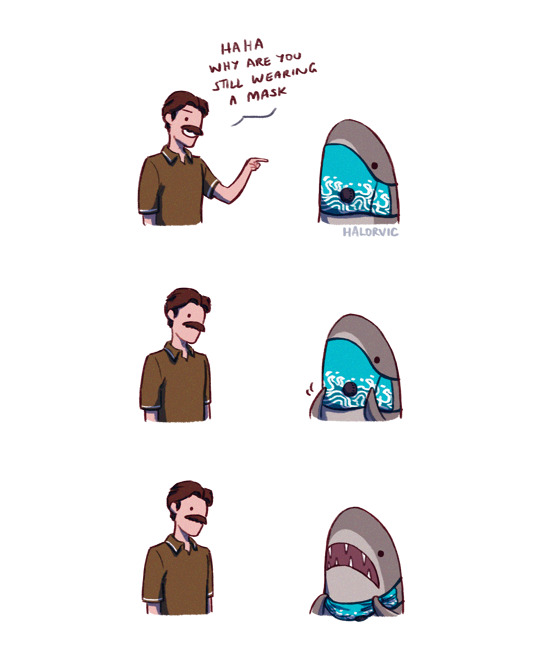

😑
44K notes
·
View notes
Photo





GALAVANT 2.05 | Giants vs. Dwarves (2016)
9K notes
·
View notes
Text
I feel like one of the biggest misconceptions out there is that all fanfic is written by 12 and 13 year olds
Like the other day I read a fanfic where Jason Todd is remodeling his kitchen and is concerned about wooden countertops because what if you get raw chicken on your wooden countertop?
You think a 13 year old thinks about countertops? Think again my friend that fic was written by an Adult
95K notes
·
View notes
Text
tumblr
This is my favorite thing I’ve ever seen on TikTok
58K notes
·
View notes
Note
Please make a post about the story of the RMS Carpathia, because it's something that's almost beyond belief and more people should know about it.
Carpathia received Titanic’s distress signal at 12:20am, April 15th, 1912. She was 58 miles away, a distance that absolutely could not be covered in less than four hours.
(Californian’s exact position at the time is…controversial. She was close enough to have helped. By all accounts she was close enough to see Titanic’s distress rockets. It’s uncertain to this day why her crew did not respond, or how many might not have been lost if she had been there. This is not the place for what-ifs. This is about what was done.)
Carpathia’s Captain Rostron had, yes, rolled out of bed instantly when woken by his radio operator, ordered his ship to Titanic’s aid and confirmed the signal before he was fully dressed. The man had never in his life responded to an emergency call. His goal tonight was to make sure nobody who heard that fact would ever believe it.
All of Carpathia’s lifeboats were swung out ready for deployment. Oil was set up to be poured off the side of the ship in case the sea turned choppy; oil would coat and calm the water near Carpathia if that happened, making it safer for lifeboats to draw up alongside her. He ordered lights to be rigged along the side of the ship so survivors could see it better, and had nets and ladders rigged along her sides ready to be dropped when they arrived, in order to let as many survivors as possible climb aboard at once.
I don’t know if his making provisions for there still being survivors in the water was optimism or not. I think he knew they were never going to get there in time for that. I think he did it anyway because, god, you have to hope.
Carpathia had three dining rooms, which were immediately converted into triage and first aid stations. Each had a doctor assigned to it. Hot soup, coffee, and tea were prepared in bulk in each dining room, and blankets and warm clothes were collected to be ready to hand out. By this time, many of the passengers were awake–prepping a ship for disaster relief isn’t quiet–and all of them stepped up to help, many donating their own clothes and blankets.
And then he did something I tend to refer to as diverting all power from life support.
Here’s the thing about steamships: They run on steam. Shocking, I know; but that steam powers everything on the ship, and right now, Carpathia needed power. So Rostron turned off hot water and central heating, which bled valuable steam power, to everywhere but the dining rooms–which, of course, were being used to make hot drinks and receive survivors. He woke up all the engineers, all the stokers and firemen, diverted all that steam back into the engines, and asked his ship to go as fast as she possibly could. And when she’d done that, he asked her to go faster.
I need you to understand that you simply can’t push a ship very far past its top speed. Pushing that much sheer tonnage through the water becomes harder with each extra knot past the speed it was designed for. Pushing a ship past its rated speed is not only reckless–it’s difficult to maneuver–but it puts an incredible amount of strain on the engines. Ships are not designed to exceed their top speed by even one knot. They can’t do it. It can’t be done.
Carpathia’s absolute do-or-die, the-engines-can’t-take-this-forever top speed was fourteen knots. Dodging icebergs, in the dark and the cold, surrounded by mist, she sustained a speed of almost seventeen and a half.
No one would have asked this of them. It wasn’t expected. They were almost sixty miles away, with icebergs in their path. They had a respondibility to respond; they did not have a responsibility to do the impossible and do it well. No one would have faulted them for taking more time to confirm the severity of the issue. No one would have blamed them for a slow and cautious approach. No one but themselves.
They damn near broke the laws of physics, galloping north headlong into the dark in the desperate hope that if they could shave an hour, half an hour, five minutes off their arrival time, maybe for one more person those five minutes would make the difference. I say: three people had died by the time they were lifted from the lifeboats. For all we know, in another hour it might have been more. I say they made all the difference in the world.
This ship and her crew received a message from a location they could not hope to reach in under four hours. Just barely over three hours later, they arrived at Titanic’s last known coordinates. Half an hour after that, at 4am, they would finally find the first of the lifeboats. it would take until 8:30 in the morning for the last survivor to be brought onboard. Passengers from Carpathia universally gave up their berths, staterooms, and clothing to the survivors, assisting the crew at every turn and sitting with the sobbing rescuees to offer whatever comfort they could.
In total, 705 people of Titanic’s original 2208 were brought onto Carpathia alive. No other ship would find survivors.
At 12:20am April 15th, 1912, there was a miracle on the North Atlantic. And it happened because a group of humans, some of them strangers, many of them only passengers on a small and unimpressive steam liner, looked at each other and decided: I cannot live with myself if I do anything less.
I think the least we can do is remember them for it.
275K notes
·
View notes
Photo

I can’t find it on tumblr and IT CHRISMAS GOD DAMMIT.
MERR CHRISMAS.
61K notes
·
View notes

